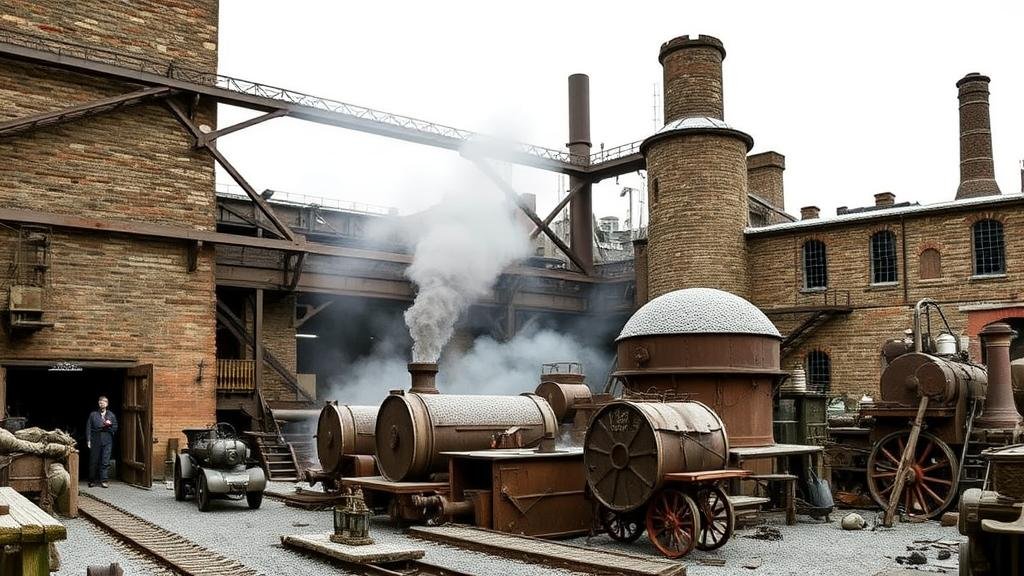Exploring Forgotten Foundry Districts for Early Metalworking Relics
Exploring Forgotten Foundry Districts for Early Metalworking Relics
The study of early metalworking practices provides valuable insights into the technological advancements and economic frameworks of past societies. Foundry districts, often located in urban centers, served as the epicenters for metal production, influencing local economies and craftsmanship. This article explores the significance of forgotten foundry districts, their historical contexts, and the relevance of metalworking relics in understanding industrial heritage.
Historical Context of Foundry Districts
Foundry districts emerged during various industrial revolutions, particularly from the late 18th century through the early 20th century. One of the most notable early examples is the iron foundries in Birmingham, England, which became a hub for metalworking innovations in the 1700s. By 1851, Birmingham was producing around 51% of Britain’s iron goods, showcasing its industrial prominence.
Also, in the United States, cities like Pittsburgh, Pennsylvania, earned their reputation as steel capitals, with the construction of foundries that utilized local resources, such as iron ore from the Allegheny Mountains. The Pittsburgh Foundry District thrived in the late 19th century, with establishments like the Edgar Thomson Steel Works opening in 1872, revolutionizing metal production.
Importance of Metalworking Relics
Relics from early foundry districts serve as tangible evidence of historical metalworking practices. e artifacts can take various forms, including machinery, tools, and finished products, all of which provide insights into the technological advancements of their time. For example, remnants of the Bessemer converter, developed in the 1850s, mark the industrial shift towards mass steel production, highlighting how these innovations affected economic and social structures.
Plus, the material culture of foundries reflects the labor practices and skillsets of the workers involved. By analyzing these relics, researchers can better understand the occupational roles, working conditions, and the socio-economic implications in specific geographic contexts.
Current Research Approaches
Modern archaeology and historical research methods yield effective approaches for exploring forgotten foundry districts. Techniques such as remote sensing, archival research, and material analysis provide comprehensive insights into the spatial and operational facets of foundries.
- Remote Sensing: Technologies such as LiDAR (Light Detection and Ranging) help identify remnants of foundry structures concealed by vegetation or urban development.
- Archival Research: Investigating historical documents, production records, and patents elucidates the socio-economic contexts surrounding foundries and their outputs.
- Material Analysis: Examining the alloy compositions of foundry relics through methods like X-ray fluorescence (XRF) can reveal shifts in material usage and technology over time.
Case Studies of Forgotten Foundry Districts
Several case studies exemplify the significance of exploring forgotten foundry districts. One prominent example is the Phoenixville Foundry in Pennsylvania, established in the early 19th century. This site was critical in producing iron products for the growing railroad industry. Its archaeological excavation revealed elements such as casting molds and slag, shedding light on production techniques used during that era.
Another example is the foundry district in Sheffield, England, known for its stainless steel production since the 1800s. Sheffields complex includes numerous artifacts, such as early knife-making machines, that highlight the citys industrial heritage and innovation in metalworking.
Challenges in Preservation and Exploration
Despite their historical value, many foundry districts face challenges related to preservation. Urban development often leads to the destruction of these sites, making it imperative to prioritize their study and conservation. Also, public awareness of metalworking heritage is crucial, as it can foster support for preservation efforts. For example, the American Institute for Conservation of Historic and Artistic Works actively promotes advocacy for the protection of industrial heritage.
Conclusion and Actionable Takeaways
Exploring forgotten foundry districts reveals critical aspects of early metalworking practices that shape our understanding of industrial history. By utilizing modern research techniques and acknowledging the historical significance of these sites, researchers can pave the way for more profound insights into our industrial past.
To support this field of study, stakeholders are encouraged to:
- Promote awareness about the historical significance of foundry districts through educational programs.
- Engage in partnerships with local governments to protect remaining industrial sites.
- Leverage technological advancements to facilitate non-intrusive studies of buried or less accessible sites.
Through a concerted effort in preserving and studying these relics, societies can not only honor their industrial heritage but also understand the evolution of technology and its socio-economic implications.



